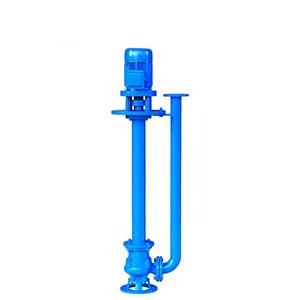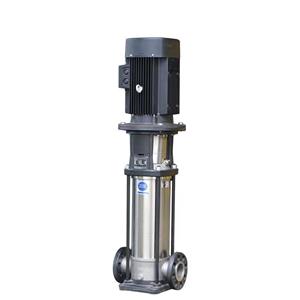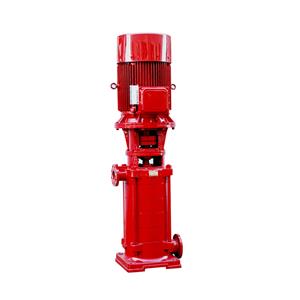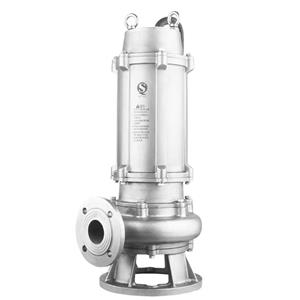Company news
-
energy - saving in centrifugal pumps is a multi - faceted task. By carefully selecting the right pump, maintaining it properly, optimizing the system, implementing control systems, and training the operators, we can achieve significant energy savings. These energy - saving measures not only reduce the operating costs of enterprises but also contribute to environmental protection by reducing energy consumption and carbon emissions. It is crucial for all industries that rely on centrifugal pumps to continuously explore and implement these energy - saving methods to achieve sustainable development.
-
when a self - priming pump is buzzing but not pumping water, it is essential to systematically check for these common issues. By addressing the root cause of the problem, you can restore the pump's functionality and ensure efficient water pumping. Regular maintenance and proper installation can also help prevent such issues from occurring in the future.
-
when it comes to handling 2 - 3 cm banana stem fragments, diaphragm pumps, progressive cavity pumps, and screw pumps are all viable options, each with its own advantages and disadvantages. Diaphragm pumps are good for their anti - clogging ability and ease of maintenance, progressive cavity pumps offer a smooth flow and can handle a wide range of conditions, and screw pumps are efficient and can handle high flow rates. The choice ultimately depends on factors such as the specific processing requirements, budget, and the importance of factors like flow rate, maintenance, and cost.
-
1301-2025
The Advantages of Vertical Volute Pumps
Vertical volute pumps are built to withstand harsh operating conditions. They can handle a wide range of fluid viscosities, temperatures, and pressures. In chemical processing plants, where pumps are often exposed to corrosive chemicals and high - temperature fluids, the robust construction of vertical volute pumps ensures reliable operation over an extended period. Their reliability reduces the risk of unexpected breakdowns, which could otherwise lead to costly production losses. In conclusion, vertical volute pumps offer a combination of advantages in terms of space utilization, efficiency, suction performance, maintenance, and reliability. These features make them an ideal choice for a diverse range of industries, from manufacturing and power generation to agriculture and wastewater treatment. As technology continues to advance, we can expect vertical volute pumps to become even more efficient and reliable, further expanding their applications in the future.
-
In conclusion, the price trends of self-priming pumps in the international market are a complex interplay of factors including regional demand, technological advancements, regulatory requirements, and market competition. Keeping a close eye on these trends is essential for making informed decisions whether you are purchasing pumps for a small business or manufacturing them on a large scale.
-
In the realm of fluid transfer, dealing with media that contains impurities is a common yet challenging task. Self-priming pumps have emerged as a reliable solution, offering several distinct advantages that make them a preferred choice in such scenarios.
-
Self-priming pumps are widely used in various industries and applications. However, when it comes to pumping fluids that contain particulate matter and impurities, special attention must be paid to ensure the pump's efficient operation and longevity. Here are some crucial considerations.
-
Maintaining a self-priming pump is crucial to ensure its longevity, efficiency, and reliability. Regular inspections, cleaning, lubrication, and monitoring of performance can help prevent issues and extend the life of the pump. By following the manufacturer’s maintenance guidelines and addressing common issues promptly, you can ensure that your self-priming pump operates smoothly, even in challenging environments. Proper pump maintenance not only prevents costly repairs but also ensures that your system runs at optimal efficiency, saving energy and reducing operational downtime.
-
Self-priming pumps are invaluable in a variety of applications where air in the suction line, fluctuating fluid levels, or challenging fluid properties can interfere with the pumping process. They are essential in industries ranging from wastewater treatment and agriculture to construction and emergency dewatering. In situations where traditional pumps would struggle, self-priming pumps provide the reliability and flexibility needed to maintain smooth, continuous operations. By understanding the unique advantages of self-priming pumps and identifying the right applications, industries can optimize their fluid handling processes and improve overall system efficiency.
-
Self-priming pumps are critical components in numerous industries, and choosing the right brand and model can make a significant difference in performance, reliability, and efficiency. Brands like Grundfos, Xylem (Goulds), Pedrollo, Tsurumi, Franklin Electric, Wilo, Lowara, BJM Pumps, and Sulzer are at the forefront of self-priming pump technology, each offering unique solutions for different applications. Their focus on durability, energy efficiency, and innovative features has made them leaders in the pump manufacturing industry, providing pumps that meet the demands of industrial, agricultural, and municipal sectors worldwide. When selecting a self-priming pump, it is essential to consider the specific requirements of the application and the reputation of the manufacturer to ensure long-term reliability and performance.




